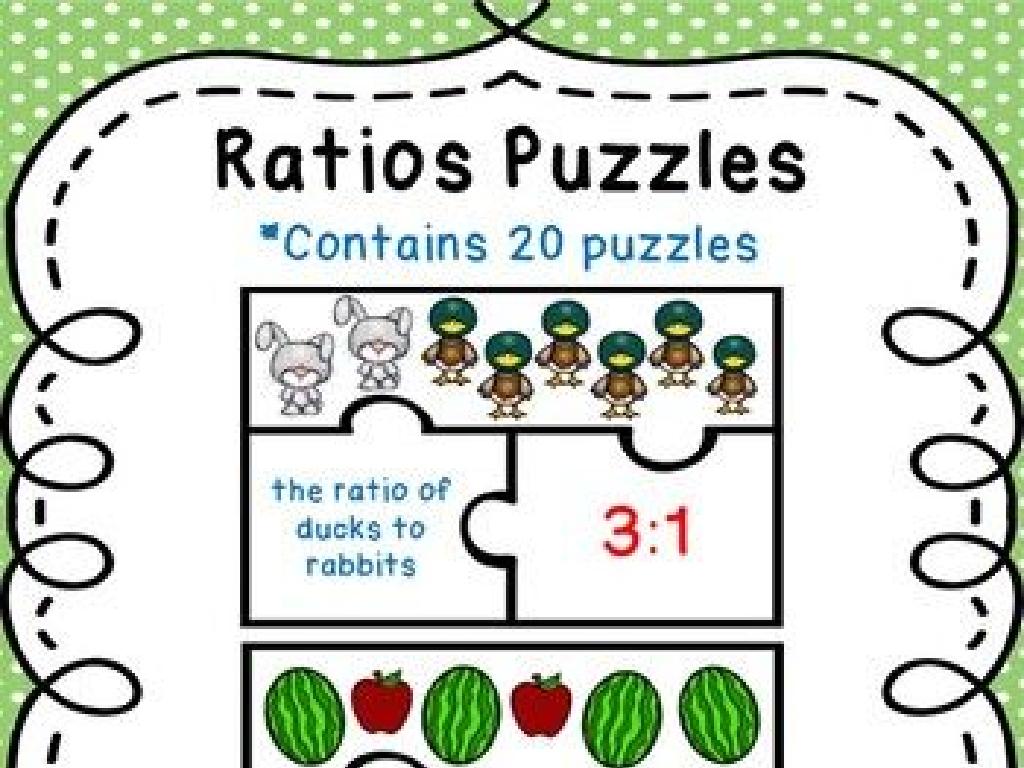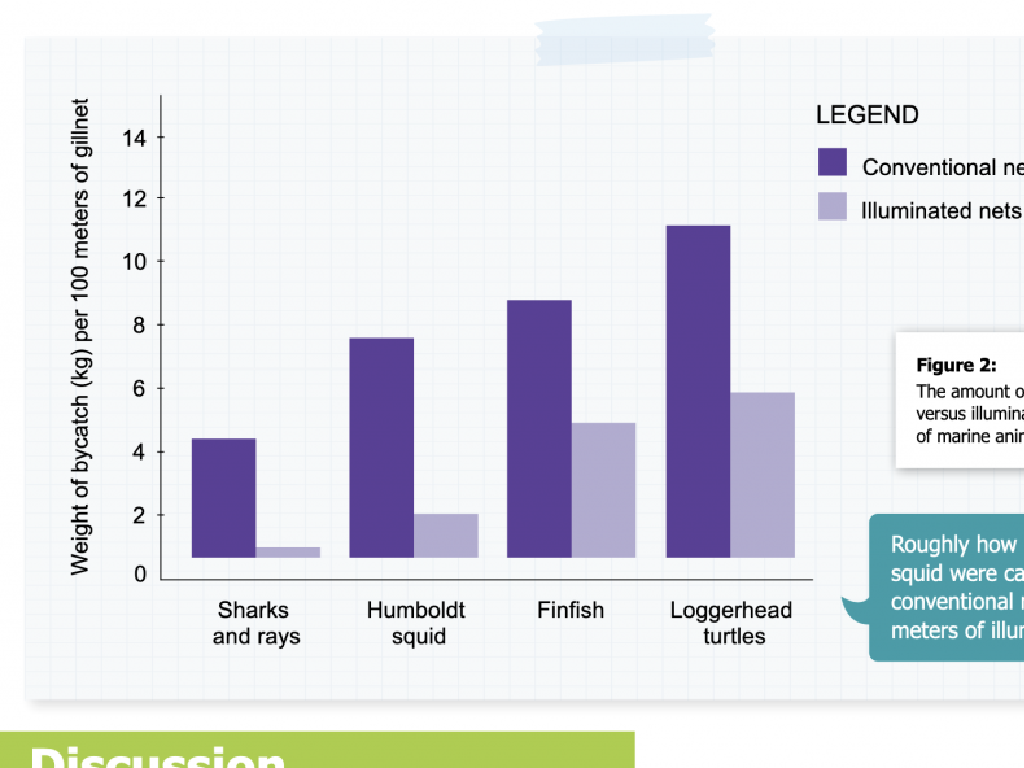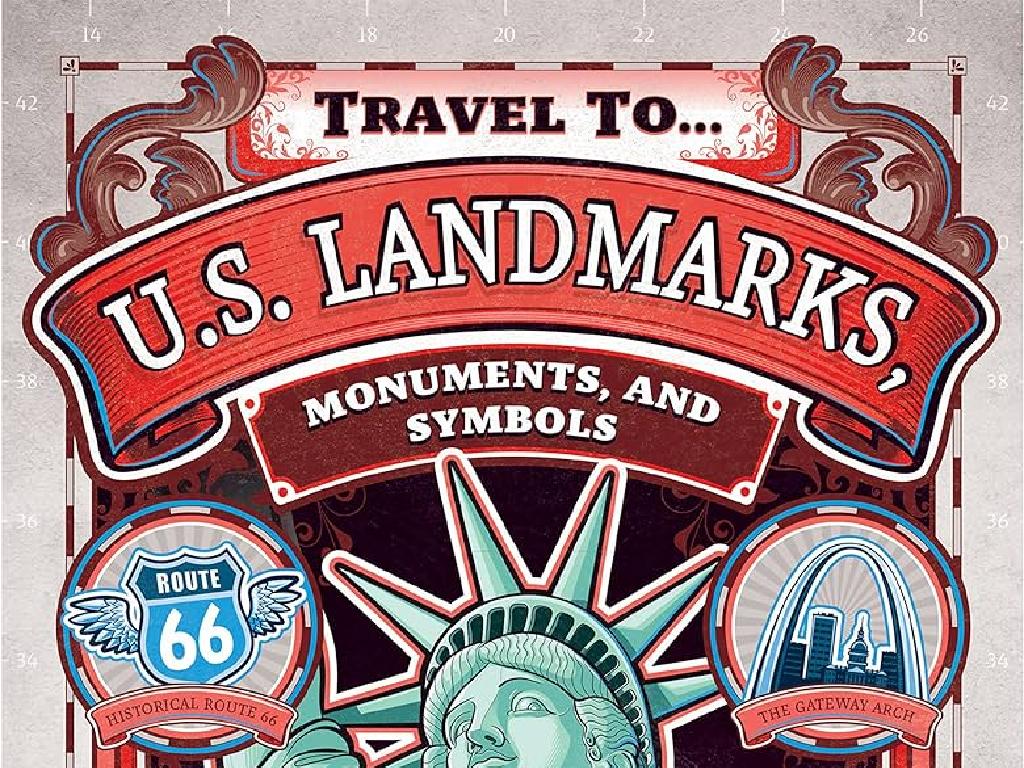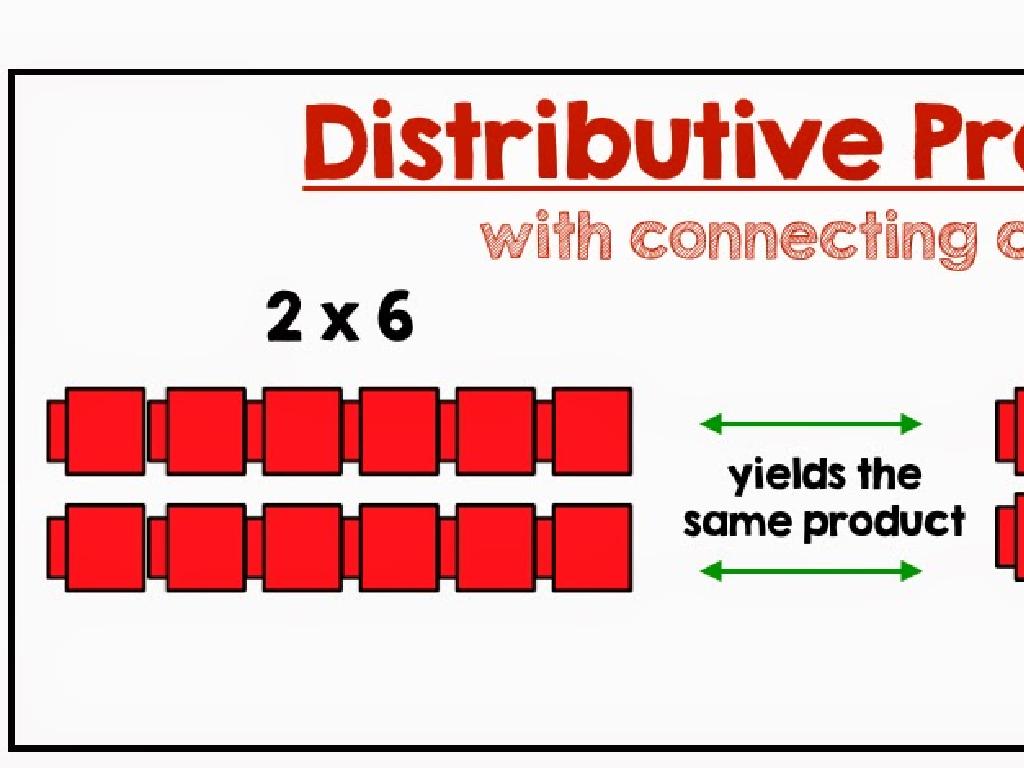Shapes Of Everyday Objects Ii
Subject: Math
Grade: First grade
Topic: Three-Dimensional Shapes
Please LOG IN to download the presentation. Access is available to registered users only.
View More Content
Welcome to 3D Shapes!
– Greeting First Graders
– Discover 3D shapes around us
– Look around, can you spot any 3D shapes?
– Understanding 3D shapes
– 3D shapes have length, width, and height
– Examples of 3D shapes
– Like balls (spheres), boxes (cubes), and cans (cylinders)
|
Begin the class with a warm welcome to engage the students. Introduce the concept of 3D shapes by encouraging the children to observe their environment and identify objects that have three dimensions. Explain that unlike 2D shapes, 3D shapes have depth in addition to length and width, making them solid objects they can hold and touch. Use tangible examples that are familiar to them, such as a ball representing a sphere, a box for a cube, and a can for a cylinder. This will help them better visualize and understand the concept of three-dimensional shapes.
Exploring 3D Shapes in Our World
– 3D shapes have three dimensions
– Length, width, and height make 3D
– Common 3D shapes: cube, sphere
– Cube like a dice, sphere like a ball
– More 3D shapes: cylinder, cone
– Cylinder like a can, cone like a party hat
– Show and tell with real objects
|
This slide introduces students to the concept of three-dimensional shapes by explaining that unlike flat shapes, 3D shapes have length, width, and height. Use everyday objects to help students visualize and understand these dimensions. Show examples of common 3D shapes such as a cube (dice), sphere (ball), cylinder (soup can), and cone (party hat). Organize a show and tell activity where students bring an object from home and discuss its shape. This will help them recognize 3D shapes in their environment and understand their properties. Encourage students to touch and hold the objects to better grasp the concept of dimensions.
Meet the Cube: A 3D Shape
– A cube has 6 square faces
– Cubes have 12 edges, 8 vertices
– Find cube-shaped objects
– Look around the room for cube-like items
– Examples: dice, block, box
– Dice for games, toy blocks, and cardboard boxes
|
Introduce the cube by discussing its properties: 6 faces that are all squares, 12 edges where two faces meet, and 8 vertices or corners. Use tangible examples like a dice, a toy block, or a box to help students visualize the concept. Encourage the children to explore the classroom to find objects shaped like cubes, enhancing their understanding of three-dimensional shapes in a fun, interactive way. This activity will help solidify their ability to recognize cubes in various contexts and understand their geometric properties.
Rolling with Spheres
– A sphere is round like a ball
– It’s shaped like your favorite play balls
– Spheres have no edges or vertices
– Unlike a cube, a sphere is smooth all over
– Examples: basketball, globe, bubble
– A basketball for sports, a globe for geography, and a bubble you blow
|
This slide introduces the concept of spheres to first graders by relating it to familiar objects. Emphasize that a sphere is a three-dimensional shape that is perfectly round and does not have any flat surfaces, edges, or vertices. Use tangible examples like a basketball, which they can hold and see is round from all angles, a globe, which represents Earth, and bubbles that they can create and observe. Encourage the students to think of other examples of spheres they encounter in their daily lives. You can bring in a ball, a small globe, and maybe even blow bubbles to make the learning experience interactive and fun.
The Cool Cylinder
– Cylinder has two circular faces
– One curved side connects the faces
– It can stand or lie on its side
– Everyday items as examples
– Cans, cups, and drums are all cylinders
|
This slide introduces the cylinder, a common three-dimensional shape, to first graders. Emphasize that a cylinder has two flat faces that are circles and one curved side that connects them. Show how a cylinder can either stand up on one of its circular faces or lie down on its curved side. Use relatable examples such as cans, cups, and drums to help students identify cylinders in their everyday environment. Encourage the students to bring or point out cylindrical objects in the classroom to reinforce the concept.
The Pointy Cone
– A cone’s circular base
– Vertex: the pointy top
– Cones in daily life
– Think of a party hat or ice cream
– Recognizing cones around us
– Traffic cones, party hats, carrots
|
This slide introduces the cone, a three-dimensional shape that students can easily find in their daily lives. Emphasize the circular base of the cone and the vertex, which is the pointy top. Use familiar objects like party hats and ice cream cones to help students visualize the shape. Provide examples such as traffic cones, party hats, and carrots to show how cones appear in various contexts. Encourage students to look for cone-shaped objects in the classroom or at home to reinforce their understanding. The goal is to help students recognize and name cone shapes in their environment, enhancing their spatial awareness and vocabulary.
Let’s Find 3D Shapes Around Us!
– 3D shapes are all around us
– Explore to find classroom 3D shapes
– Look for cubes, spheres, and cylinders in the room
– 3D shapes have 3 dimensions
– Length, width, and height make 3D shapes
– Recognize shapes by dimensions
– A can is a cylinder, a dice is a cube
|
This slide is designed to engage first-grade students in a fun and interactive way to recognize three-dimensional shapes in their immediate environment. Encourage the students to observe their surroundings and identify objects that match the shapes they’ve learned about, such as cubes, spheres, and cylinders. Explain that unlike flat shapes, 3D shapes have three dimensions length, width, and height. Use classroom objects like a globe for a sphere, a box for a cube, and a can for a cylinder as examples. This activity will help solidify their understanding of 3D shapes and how they differ from 2D shapes. Make sure to walk around the classroom with the students, pointing out various objects and discussing the shapes they represent.
Shape Hunt: Be a Shape Detective!
– Search for 3D shapes around you
– List classroom objects by shape
– Cube: block, Sphere: ball, Cylinder: can
– Draw a 3D shape and its match
– Use colors to show the sides and edges
– Share your findings with the class
|
This activity is designed to help students recognize and identify three-dimensional shapes in their environment. Encourage the children to look around the classroom and find real-life examples of 3D shapes such as cubes, spheres, and cylinders. They should make a list of these items and note which shape they represent. Then, ask them to draw their favorite 3D shape along with the object they found that matches it. This will help them to connect the abstract concept of 3D shapes with tangible items they interact with daily. After the drawing, have a discussion where each student can present their shape and the corresponding object, fostering a collaborative learning environment.
Review and Share: 3D Shapes
– Review 3D shapes we learned
– Share your 3D shape drawings
– Show your drawings to the class and describe them
– Name 3D shapes from memory
– Try to recall the shapes we studied: sphere, cube, cylinder, and cone
– Class discussion on 3D shapes
– Let’s talk about where we see these shapes in real life
|
This slide is meant to reinforce the day’s learning by reviewing the 3D shapes covered in the lesson. Encourage the students to share their drawings of 3D shapes with the class to create a collaborative learning environment. Prompt them to try and name the shapes they’ve learned without looking at any references to assess their memory retention. Engage the class in a discussion about where they might find these shapes in everyday objects around them. This activity will help solidify their understanding of 3D shapes and how they apply to the world. For the teacher: Prepare to guide the discussion by asking questions about common objects that match the shapes learned, and be ready to provide praise and gentle corrections as needed.
Goodbye 3D Shapes!
– Great job learning today!
– Find 3D shapes around your home
– Cans are cylinders, balls are spheres
– Share your 3D shape finds next class
– Bring a list or drawings of what you find
– Excited to see you all next time!
|
This slide is meant to conclude the lesson on three-dimensional shapes with a positive note, praising the students for their efforts. Encourage them to continue observing their surroundings at home to identify 3D shapes, such as cubes, spheres, and cylinders, in everyday objects. This will help reinforce their understanding of the shapes they’ve learned about. Ask them to either make a list or draw the shapes they find to share with the class in the next session. This activity will not only engage them in the learning process but also prepare them for the next lesson. Looking forward to the next class will keep them excited about math.






